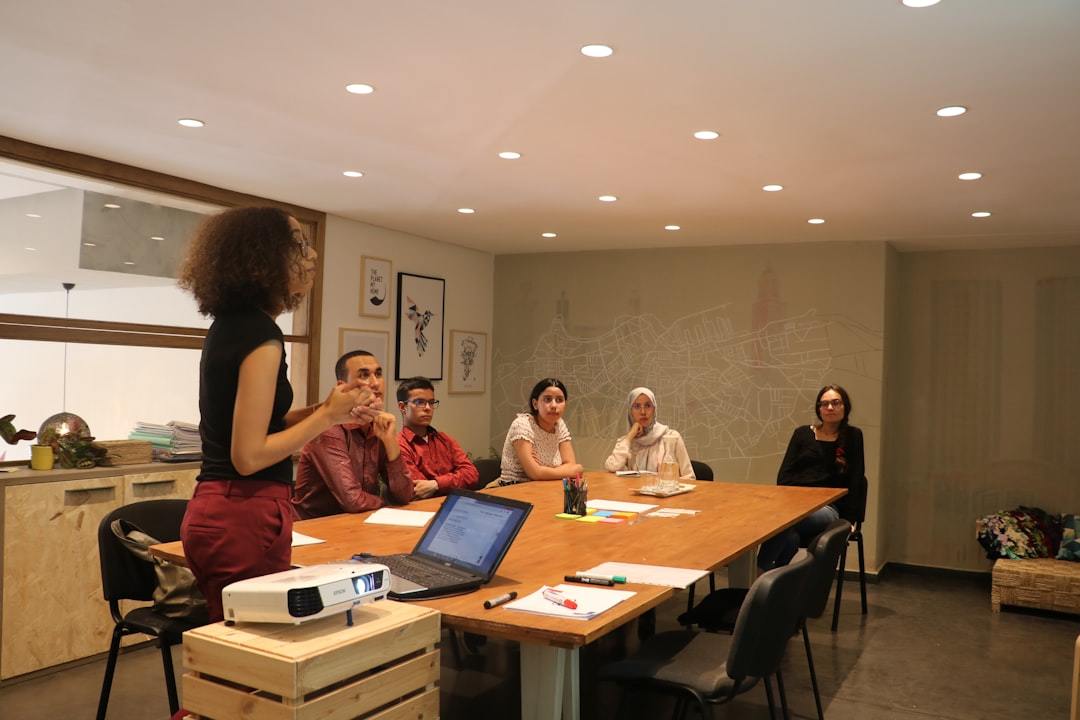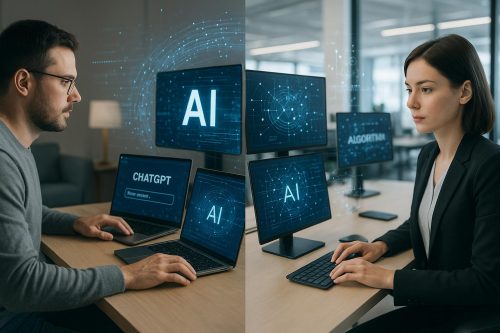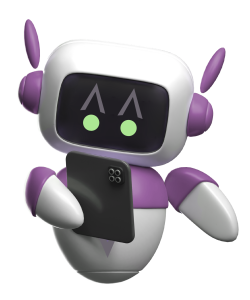For more than a decade, we’ve witnessed rapid changes in the business world. AI workforce adoption is a significant game-changer. It’s not just about new AI technology; it’s a fundamental shift in how we work and stay competitive.
The New Language of Business
Artificial intelligence is rapidly transforming businesses. AI adoption is no longer optional, but essential for survival. While some fear AI replacement, innovative companies are reshaping operations with AI solutions.
Generative AI excels at automating repetitive business communication. This changes how people communicate. It’s also transforming business models.
Unlocking Potential with an AI-Literate Workforce
Generative AI has potential for positive change when combined with human skills. The 2024 State of Business Communication Report found employees feel empowered. They reported AI improving everyone’s quality of life.
Knowledge workers using gen AI regularly find it improves productivity. It frees up time for other important matters. AI isn’t just about improving productivity; it simplifies tasks.
Combining people and AI leads to business benefits like improved customer service. This saves time and costs, fueling innovation. Widespread AI adoption across businesses will maximize benefits. The blend of AI technologies paves the way for previously impossible concepts to become reality. The workforce must be AI literate to stay competitive in a world embracing AI.
Bridging the AI Skills Gap: Addressing AI Workforce Adoption Challenges
Widespread AI adoption requires an AI-literate workforce. The 2024 report reveals a skills gap – over half of workers aren’t fully leveraging AI’s power. AI literacy requires attention.
As LinkedIn’s VP of Global Clients Janine Chamberlin stated, “Ensuring employees are AI literate is crucial.” Each worker is at a different stage of AI adoption.
Some are hesitant. Others have only scratched the surface of AI’s abilities. A smaller group actively integrates AI into daily work. The most comfortable workers use AI tools like a second language.
Many haven’t fully explored AI’s benefits. There’s a spectrum of adoption: from fear to curiosity, to experimentation, to integration.
Understanding Large Language Models (LLMs)
AI literacy involves understanding Large Language Models (LLMs). These models power gen AI. They predict, write, code, or answer conversationally.
Each LLM has advantages. Some LLMs train on public internet data, others on private databases. How models are programmed determines their best use.
Understanding this helps us recognize each LLM’s capabilities. This leads to more intelligent usage and prevents biases. LLMs have pitfalls, especially with unreliable internet data.
Even good responses from LLMs trained on poor data might reflect biases, reducing accuracy. Ongoing training and workforce development initiatives are crucial for successful AI adoption in organizations. By equipping employees with the necessary AI skills, companies can unlock the full potential of this transformative technology and ensure they are prepared for the future of work.
The Compounding Effects of AI Workforce Adoption
Organizations benefit from improved communication. Increased AI literacy company-wide creates compound advantages. Workers experience less stress and burnout.
Job satisfaction increases, reducing turnover. Internal reports show improvements when companies leverage generative AI.
For regular gen AI users, 77% report improved job performance. This shows the importance of skilled AI use. The State of Business Communication highlights this divide between leaders and workers. HR professionals can play a vital role in facilitating AI workforce adoption by providing training programs, workshops, and resources that help employees understand and effectively utilize AI tools.
AI Workforce Adoption: Leading the Way
Widespread AI workforce adoption starts with strategic planning. Invest time in education, explaining AI’s value across the company.
Assign responsibility to specialized teams. Highlight how AI benefits daily operations. Conduct workshops showcasing AI advantages.
Include expert talks and Q&A sessions. Address the needs of different teams, generations, and job positions. This can also provide library resources and real-time support for employees.
| Action | Description |
|---|---|
| 1. Gain Buy-In | Educate leadership and employees on AI benefits. Secure buy-in and generate excitement for integrating AI. |
| 2. Train and Educate | Launch tailored AI training programs for different roles and skill levels. This ongoing training can provide a continuous development track and foster more senior leaders from within the current workforce development structure. |
| 3. Invest in Tools | Choose AI tools that enhance communication and security. Prioritize secure data management systems. These tools daily provide critical assistance for tasks involving business communications, creating spreadsheets, and providing more real estate for visual designs that are appealing to wide range of users. |
| 4. Set Clear Guidelines | Establish policies for AI usage. Address ethical AI concerns, privacy, and best practices. As more companies adopt AI, the issues related to privacy, data handling, and social media must be proactively addressed. |
| 5. Cultivate a Culture of Innovation | Foster a culture that supports innovative solutions and recognizes achievements related to AI work. Leaders lean on providing continuous encouragement as many of the fact employees fear AI replacement within a year. These hr leaders should explain and clearly address concerns that often come with leveraging AI and should offer job descriptions explaining exactly what AI tools would or wouldn’t enhance within their own individual position and team members as many job sectors face an uphill battle with fearing AI technologies due to job security concerns. |
The future of business in light of AI is uncertain. Adapting now by increasing AI usage can improve customer satisfaction and profits. AI is transforming all industries and will separate leaders from laggards.
FAQs about AI workforce adoption
What is the AI adoption rate?
AI adoption rates vary across industries and company sizes. A 2024 report found 53% of knowledge workers use AI. Early adoption is common in tech, but other sectors are experimenting with AI.
Many start small and evaluate usefulness later. Expect growth in the coming years. Adoption speed also varies within businesses. Leaders and younger team members often favor AI literacy more.
How many jobs will AI replace by 2030?
Job displacement concerns exist, but current trends indicate AI enhances or shifts, not eliminates jobs. Many frontline workers find it makes their current jobs easier, while senior leaders must continually evaluate efficiency with any new AI technology. These same findings repeat in a large variety of job roles including areas such as manufacturing found on the factory floor to sales-focused businesses as well as within areas such as the supply chain to fields including real estate and many other diverse business categories.
This depends on individual flexibility and evolving job roles. It is unlikely to entirely replace any job roles such as hr professionals as people are required to facilitate meetings for implementing ai adoption throughout companies and provide access to training programs and library resources. However, they can make certain daily, time-consuming tasks less stressful for everybody and ensure there’s enough time dedicated to workforce development and ensuring ethical AI adoption.
How much of the workforce will AI replace?
There’s no consensus on how much of the workforce AI will replace. Estimates suggest some sectors face heavier automation. Current numbers don’t support a massive, immediate job loss. A large AI skills gap exists across teams and levels. As AI adoption spreads, new AI work roles emerge for those displaced by AI, along with increasing needs for support staff with strong AI skills which creates increased wages due to this skill disparity.
How is AI used in the workforce?
Currently, businesses use AI for repetitive tasks like customer support and communication. Think smart replies, emails, reports, and presentations. AI frees humans from repetitive functions. This has positive effects on employee morale and improves daily work lives.
Conclusion
AI workforce adoption is not just a trend; it’s an evolution in business. It’s a fundamental change for all employees, impacting communication, productivity, and innovation.
Early adoption positions organizations ahead of the curve. This advantage will grow as AI matures. The skills gap will shrink as tools and techniques become more accessible. AI adoption has many key issues that business leaders need to prepare for. These key findings by HR leaders should ensure these topics are covered thoroughly in regular training or as part of initial AI onboarding for all new employees so everybody understands and is comfortable adopting AI in an ethical manner that provides all the latest advantages without compromising the privacy policy.






